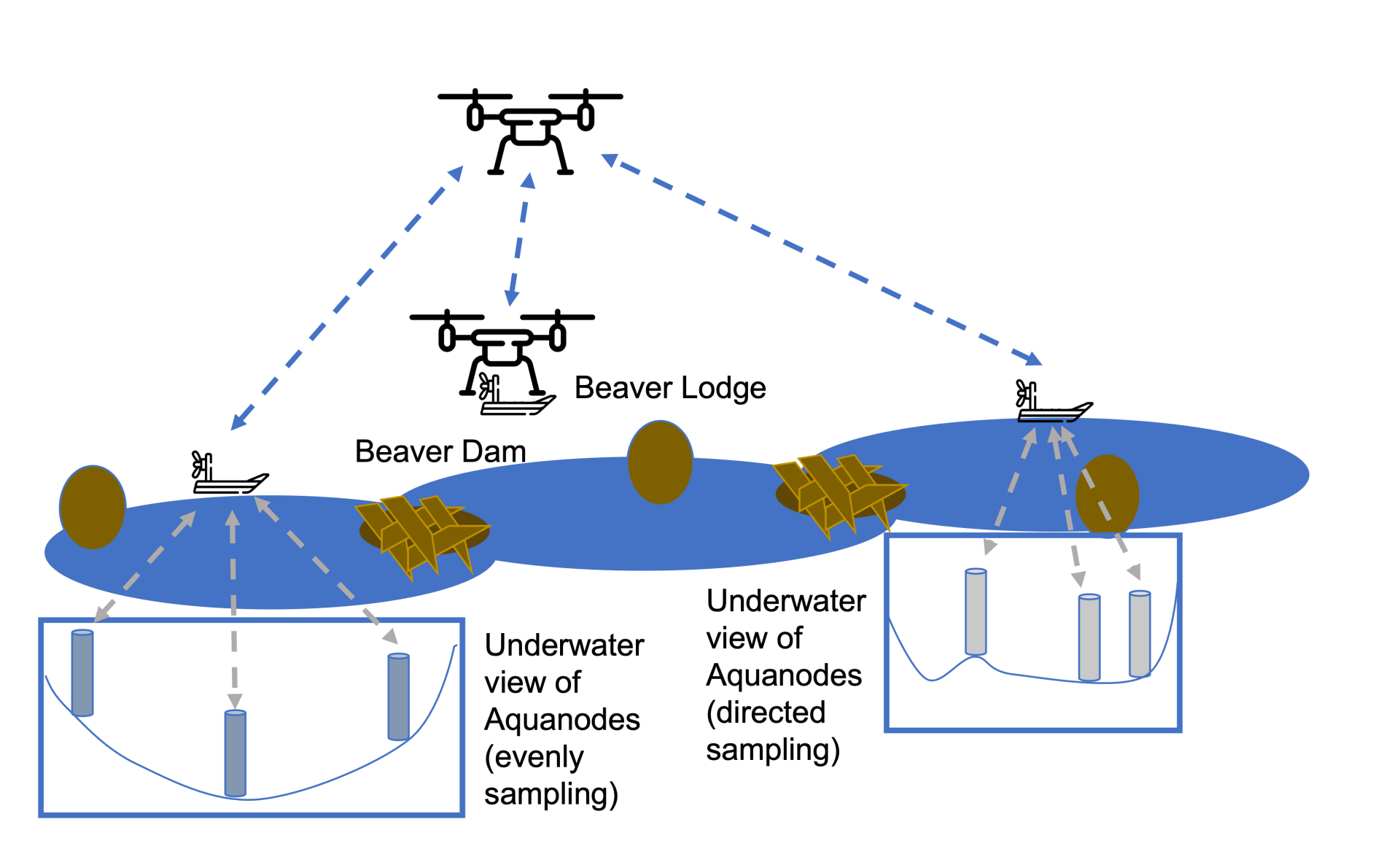This project is funded in part by the National Science Foundation through grant #NSF-NRI: 2221648

Boreal wildlife species are moving north into Arctic tundra as climate change improves their habitat. Satellite research has shown the North American beaver has colonized vast areas of northwestern Alaska over the last 20 years; as a result of the new dams and hydrological changes, permafrost is thawing. Access to measure what effect this landscape change will have on aquatic habitats and regional ecosystems is difficult due to the remoteness of the terrain, an inability to collect underwater measurements, and the complexity of the mixed aquatic and terrestrial wetland environment that defines the beaver engineered environment.
This project presents a vision for advancing heterogeneous multi-UxS technologies, practices, and understanding in order to extend the reach of human sensing in difficult-to-access environments while also providing fundamental scientific understanding of a new disturbance regime affecting all aspects of lowland Arctic ecosystems. The vision addresses key goals in the development of integrative robotic systems, such as improvements in UxS capability for sample collection, flexible UxS tasking based on vehicle abilities via observed states, and human proficiency in operation and monitoring. These objectives will be developed in accessible sub-Arctic environments before being refined in yearly tests in harsh, complex tundra contexts, all while contributing to progress in fundamental robotic integration challenges.
Teams of complementary flying, floating, and underwater robots developed by the project team have recently gained the ability to perform observations at precise locations and take measurements both above and below the surface of the water. Additional development aid in obtaining water quality, temperature, and underwater mapping measurements, as well as wildlife and ecosystem observations, at remote sites in Alaska.